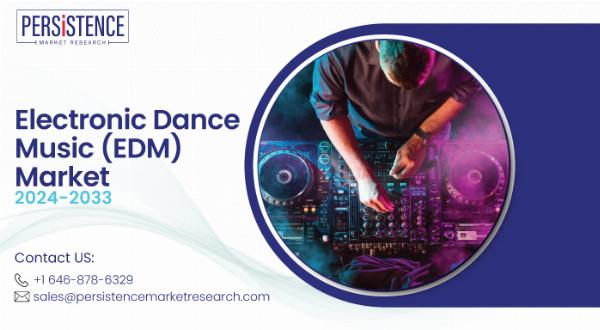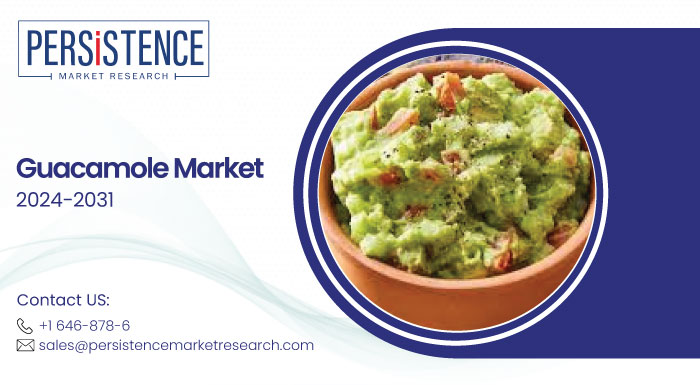Electronic Dance Music Market Target Audience Insights for Effective Marketing

Strong 8k brings an ultra-HD IPTV experience to your living room and your pocket.
The electronic dance music (EDM) market has seen exponential growth in recent years, with a global audience that spans across generations, regions, and cultural backgrounds. With its vibrant festival culture, high-energy performances, and integration of cutting-edge technology, EDM has attracted a unique and passionate fan base. For marketers looking to tap into this dynamic industry, understanding the target audience is essential to creating successful campaigns and building strong connections with EDM enthusiasts.
In this blog, we will explore key insights into the EDM market's target audience, including demographic trends, consumer behaviors, and preferences, to help marketers develop effective strategies for engaging with EDM fans.
1. Demographics of the EDM Audience
The EDM audience is primarily composed of young, tech-savvy individuals who are passionate about music, live events, and digital experiences. However, as the genre has grown in popularity, its fan base has expanded to include a broader range of demographics.
Age Range: The majority of EDM fans fall within the 18-34 age group, with millennials and Gen Z making up the largest share of the audience. These younger generations are known for their love of live experiences, digital engagement, and social media interaction, making them ideal for brands looking to reach a youthful, energetic demographic.
Gender: While EDM’s audience is fairly balanced between men and women, certain sub-genres and events may appeal more to one gender than the other. For example, the festival culture of EDM attracts both male and female attendees, with many events promoting inclusivity and community values.
Geographic Distribution: EDM has a global reach, with strong followings in regions such as North America, Europe, and Asia. The U.S. is a major hub for EDM festivals like Electric Daisy Carnival (EDC) and Ultra Music Festival, while Europe hosts iconic events like Tomorrowland and Creamfields. Emerging markets in Latin America and Asia are also experiencing a surge in EDM popularity, making them key areas for future growth.
2. Consumer Behavior and Preferences
EDM fans are deeply engaged with the genre, consuming music through various digital platforms and attending live events regularly. Understanding their behavior and preferences is crucial for brands and marketers aiming to connect with this audience.
Music Consumption Habits
Streaming Services: EDM fans are heavy users of streaming platforms like Spotify, Apple Music, and SoundCloud, where they listen to curated playlists, new releases, and DJ mixes. Streaming is a key channel for music discovery, with fans regularly exploring new tracks and artists through personalized recommendations and playlists.
Live Event Attendance: Festivals and concerts are central to the EDM experience. Fans regularly attend large-scale events, such as Tomorrowland, EDC, and Ultra, which provide immersive experiences with world-class DJs, visuals, and interactive elements. Live performances are seen as an essential part of the EDM culture, and many fans travel across the globe to attend their favorite festivals.
Social Media Engagement: EDM fans are highly active on social media platforms like Instagram, TikTok, and YouTube, where they share content, follow their favorite artists, and engage with other fans. Social media plays a crucial role in keeping the community connected, and many EDM fans use these platforms to discover new music, watch live-streamed events, and follow festival news.
Brand Preferences
Brands that align with EDM culture can tap into a loyal and enthusiastic fan base. Fans of EDM tend to gravitate toward brands that reflect the genre’s values of creativity, innovation, inclusivity, and self-expression.
Fashion and Apparel: EDM culture is closely tied to fashion, with fans often dressing in bold, expressive outfits for festivals and concerts. Brands like Nike, Adidas, and Puma have partnered with EDM events to offer exclusive festival merchandise and apparel. Additionally, many niche brands cater to festival-goers with trendy, vibrant clothing and accessories.
Technology and Gadgets: EDM fans are highly tech-savvy and often invest in the latest gadgets for an enhanced music experience. Brands like Sony, Beats by Dre, and JBL have successfully targeted this audience with high-quality audio products and partnerships with EDM artists. Moreover, tech brands often collaborate with festivals to showcase new products or offer immersive experiences through VR and AR.
Beverages and Lifestyle Brands: Alcohol and energy drink brands like Red Bull, Heineken, and Monster have been key sponsors of EDM events. These brands align well with the high-energy nature of EDM festivals, offering products that fuel the party atmosphere. Red Bull, in particular, has been a long-time supporter of the EDM community, sponsoring events, hosting DJ competitions, and creating branded content around the genre.
3. Marketing Channels and Strategies
To effectively reach and engage the EDM audience, brands must adopt a multi-channel marketing strategy that includes a mix of digital, experiential, and influencer-driven tactics.
Social Media Campaigns
Social media is the backbone of EDM culture, making it one of the most important marketing channels for reaching fans. Brands can leverage platforms like Instagram, TikTok, and YouTube to run campaigns that promote music releases, festivals, and exclusive brand partnerships.
Instagram and TikTok: Visual platforms like Instagram and TikTok are ideal for promoting EDM content, whether it’s through branded posts, artist collaborations, or fan-generated content. Short, engaging videos showcasing festival moments, DJ performances, and fan experiences resonate well with this audience. Brands can also collaborate with EDM influencers and DJs to amplify their reach and create authentic connections with fans.
Live Streaming and Virtual Events: Many EDM fans participate in live streaming events on platforms like YouTube, Twitch, and Facebook Live. Brands can sponsor live-streamed DJ sets, virtual festivals, or exclusive behind-the-scenes content to engage fans in real-time. Virtual events also offer opportunities for interactive engagement, such as live chats, polls, and giveaways.
Influencer Marketing
Influencers and DJs play a key role in shaping the EDM community’s tastes and preferences. Collaborating with popular DJs, music producers, and festival influencers can help brands connect with EDM fans on a more personal level.
DJ Partnerships: DJs and music producers are seen as cultural icons in the EDM world, making them valuable partners for brands. Sponsoring DJ tours, music releases, or exclusive merchandise collaborations can create strong brand associations with the genre. DJs often have large social media followings, making them ideal ambassadors for promoting products and experiences.
Festival Influencers: Many EDM festivals have their own network of influencers who promote the event before, during, and after the festival. These influencers create content around the festival experience, from fashion to music to behind-the-scenes looks at the event. Partnering with festival influencers can generate excitement and engagement for brands looking to get involved in the festival space.
Experiential Marketing
The immersive nature of EDM festivals makes experiential marketing a powerful tool for engaging with fans. Brands that create unique, interactive experiences at festivals can leave a lasting impression and build brand loyalty among EDM attendees.
Branded Activations: Many brands set up on-site activations at EDM festivals, offering attendees exclusive experiences such as photo booths, product demos, or interactive art installations. These activations are often highly shareable on social media, extending the reach of the campaign beyond the festival grounds.
Sponsoring Festival Stages or Events: Some brands take their involvement a step further by sponsoring stages, lounges, or even entire festivals. This type of sponsorship allows for prominent brand exposure, with logos and branding visible across festival stages, marketing materials, and social media promotions.
4. Sustainability and Social Responsibility
EDM fans, particularly millennials and Gen Z, are increasingly concerned with sustainability and social responsibility. Brands that demonstrate a commitment to eco-friendly practices and inclusivity are more likely to resonate with this audience.
Sustainable Initiatives: Festivals like Tomorrowland and Burning Man have embraced sustainability initiatives, such as reducing plastic waste, using renewable energy, and encouraging eco-friendly practices among attendees. Brands that support these efforts or offer sustainable products can appeal to environmentally conscious EDM fans.
Inclusivity and Diversity: The values of inclusivity and diversity are central to EDM culture, and fans expect brands to reflect these ideals in their marketing. Brands that promote diversity in their campaigns, partner with LGBTQ+ and minority communities, or support social causes are more likely to build strong relationships with EDM fans.
Conclusion
The EDM market offers a wealth of opportunities for brands looking to engage with a passionate, tech-savvy, and highly engaged audience. By understanding the demographics, behaviors, and preferences of EDM fans, marketers can develop targeted strategies that resonate with this unique community. Whether through social media, influencer partnerships, live events, or sustainable initiatives, brands that align with EDM culture and values are well-positioned to succeed in this dynamic and fast-growing market.
Note: IndiBlogHub features both user-submitted and editorial content. We do not verify third-party contributions. Read our Disclaimer and Privacy Policyfor details.







